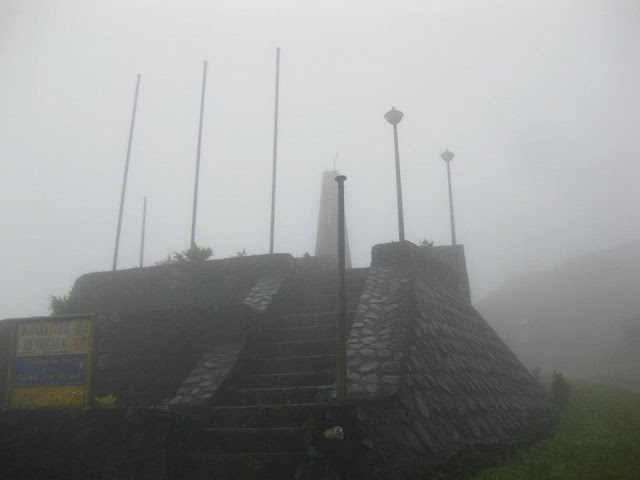Nueva Vizcaya is a province of the Philippines located in the Cagayan Valley region in Luzon. Its capital is Bayombong. It is bordered by, clockwise from the north, Ifugao, Isabela, Quirino, Aurora, Nueva Ecija, Pangasinan, and Benguet (from Wikepedia).
And Nueva Vizcaya was my final stop in my tour last December 2011.
I started my tour in Tuguegarao, then went to Ilagan, Isabela, stayed in Quirino and finally, Nueva Vizcaya.
Travel time from Ilagan, Isabela is 2 hours and 28 minutes and with a distance of 159 kilometers.
Arriving at Bayombong, I immediately went to St. Dominic Cathedral.
According to history, the first mass was celebrated here on April 12, 1739. The church was gutted by fire twice and was rebuilt on the same site. It is now approximately twice as big as its original size. Only the facade and the bell tower maintained its form from the original stone church.
From the church and with just a couple of steps, you could also check out the People's Museum and Library. A former municipal building that showcases the rich history, culture and tradition of the tribes of Nueva Vizcaya.
From the People's Museum, I strolled to my next spot to the Provincial capital's Park and Lagoon.
I strolled around the park and wandered around.. When it was about to get dark, I looked for my accommodation.
Good thing there are plenty of hotels to choose from and I chose - Saber Inn.
I spent the night at the inn and by the way, they serve the best dishes in town.
The following morning, I woke up early and went to my next destination before going home to Batangas.
I boarded a bus en route to Bambang. And from the bus stop/crossing, I hired a tricycle to Dupax Del Sur.
Travel time from Bayombong to Dupax Del Sur was approximately 30 minutes and with a distance of 27 kilometers.
My destination -
Parish Church of San Vicente de Ferrer
Parish Church of San Vicente de Ferrer in Dupax Del Sur is considered the best-preserved church complex in Nueva Vizcaya. It was built sometime in the second half of the 18th century. It is one of the oldest stone churches in Northern Luzon and was declared a National Cultural Treasure by the National Museum.
After seeing the church, I went back to the national highway in Bambang.
I boarded a bus en route back to Manila. But I still have one last spot to visit.
I alighted at the marker/arc of Nueva Ecija.
It was very foggy that day and it was freezing cold at the spot!
DALTON PASS/BALETE PASS is a rugged piece of terrain where a part of the Caraballo Sur reaches south and joins the Sierra Madre. Because of its strategic importance as the only access between Pampanga and Cagayan Valley, the pass became the scene of much bloody fighting during the final stages of World War II. Japanese Shobu soldiers headed by General Tomoyuki Yamashita tried to hold their positions while Filipino and American soldiers under the leadership of Colonel Robert Lapham, were determined to dislodge them from February to March 1945. By the close of hostilities, the blood of almost seventeen thousand Japanese fighting units and the US-Filipino allied forces mingled with the soil. Markers that commemorate their sacrifice stand by the road’s highest point, with good view into the highlands. The shrine is a reminder for Gen. James L. Dalton who was killed by a sniper’s bullet during the end of World War II. Located 3,000 feet above sea level, Balete Pass is also the gateway to the Cagayan Valley Region and the Ifugao Rice Terraces (from Cagayan Valley Region website).
 |
| Dalton pass / Balete pass |
The place where the much bloody fighting between the Japanese and the Filipino and American soldiers took place.
I stayed for a couple of minutes but the fog won't go away. And so I decided to go away..
I enjoyed my Nueva Vizcaya tour! =)










No comments:
Post a Comment